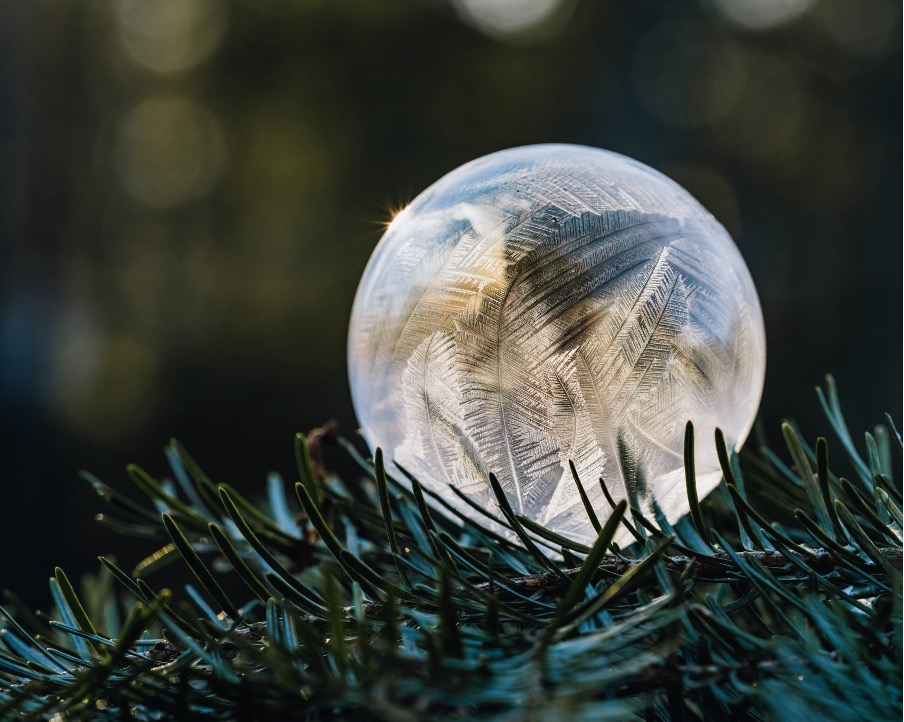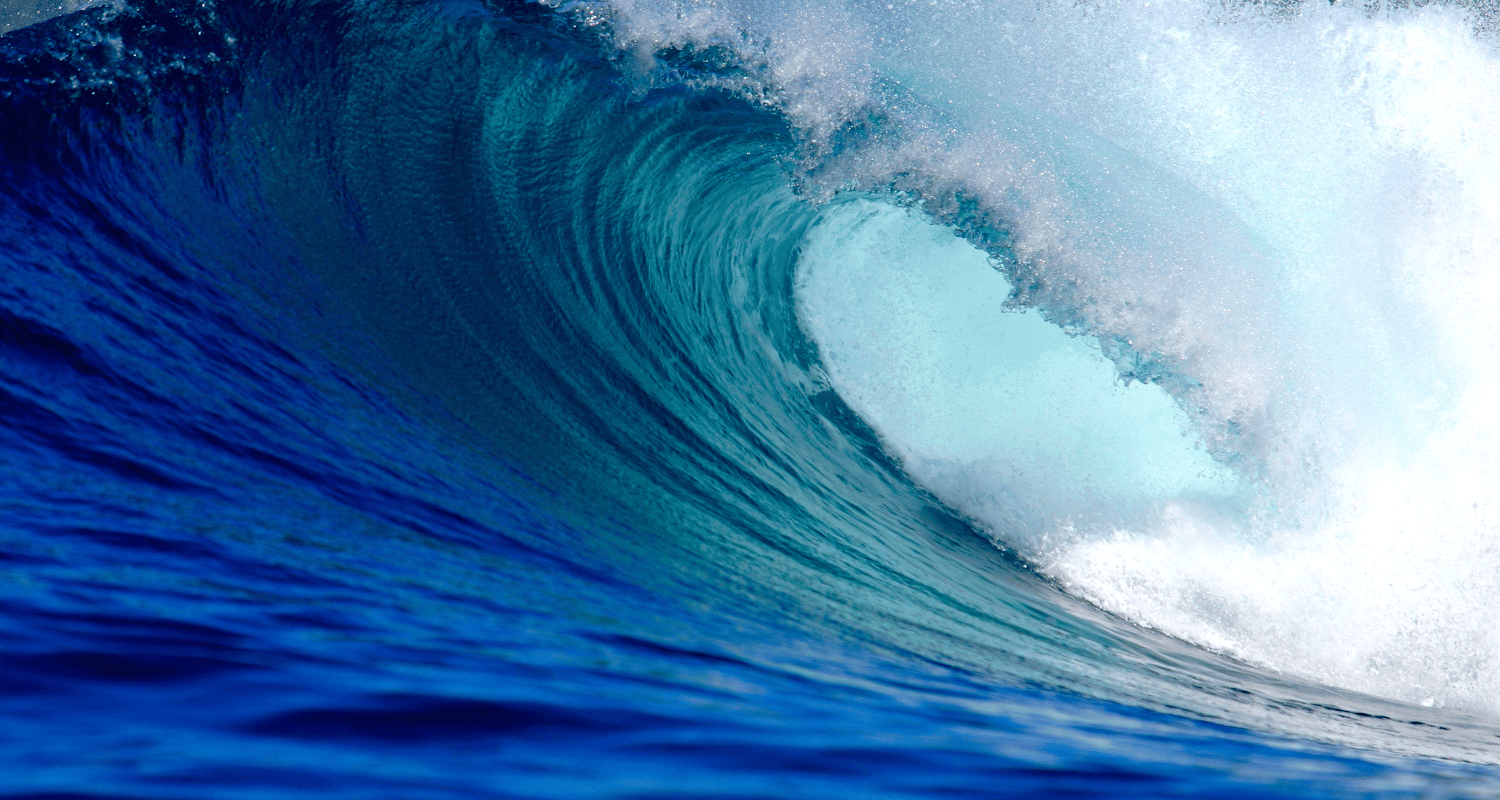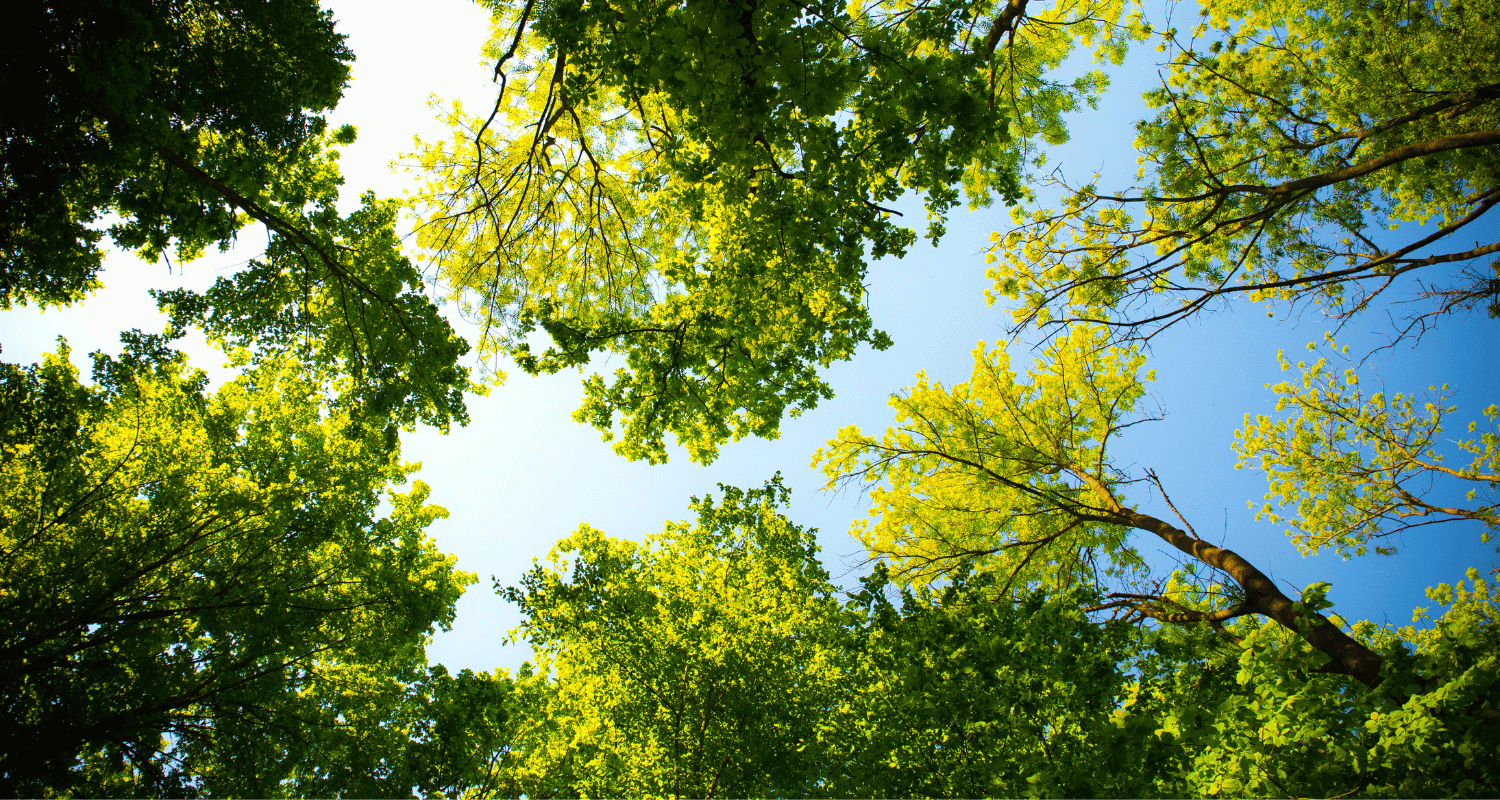
By CAGIS
Are you looking for an exciting way to enjoy the cold weather this winter? Give freezing bubbles a try! Use this special recipe to explore how ice crystals form and grow, simply by blowing a bubble.
You Will Need:
- 1 cup very warm water
- 2.5 Tbsp corn syrup
- 2 Tbsp granulated sugar
- 2.5 Tbsp dish soap (Dawn or Joy soap work best)
- Straws (plastic or reusable)
- A plastic container or bowl and spoon for mixing
Instructions
Note: Bubbles will only freeze if temperatures are below 0°C. For best results, wait for a day that is at least -10°C, but the colder the better!
- Add the warm water to your container or bowl.
- Mix in the corn syrup and stir until the water is almost clear.
- Add the sugar and mix until the sugar dissolves completely.
- Pour in the dish soap and mix lightly – be sure to add this last and do not over mix. Doing so will only create a bowl full of bubbles.
- Set the container outside or in the freezer for 30 minutes to chill. Monitor to ensure the mixture cools but does not freeze. Bundle up and bring your bubble solution outside. Dip straws into your solution, blow bubbles onto a surface, and watch crystals grow as your bubbles freeze!
Freezing Bubble Tips
- If it is a windy day choose a sheltered location. The bubbles are fragile and will pop easily in the wind.
- You can blow bubbles into the air, but they will likely pop before freezing so blow bubbles on a flat surface, like the snow covered ground, a table or bench. Try blowing them directly onto trees as an added challenge!
- Hold your straw near the surface you have selected, and blow gently. As soon as a bubble forms, quickly remove the straw before the bubble begins to freeze.
- Start with small bubbles, then increase size once you get the hang of it. Practice and don’t get discouraged – it’s worth the effort!
- When finished, cover any remaining solution and store it for another cold day!

What’s Happening?
In this recipe, two ingredients are key to successfully creating the freezing bubble effect: corn syrup and sugar.
Corn Syrup is a thick, viscous liquid that increases the strength of the bubbles so they pop less easily and can stay fully formed after freezing.
The other key ingredient, sugar, is important for the crystallization process. Crystallization occurs when a liquid freezes slowly enough that the atoms have time to organize into specific atomic structures called crystals. The addition of sugar accomplishes two goals: it slows the crystallization process of the bubble, which allows crystal formation to be observed more clearly, and it increases the amount of formed crystals as the solution attempts to stabilize in decreasing temperatures.
To learn more about the “snow globe” effect of swirling crystal formations, check out this publication in Nature where a team of scientists investigates soap bubble physics: Ahmadi, S.F., Nath, S., Kingett, C.M. et al. How soap bubbles freeze. Nature Communications 10, 2531 (2019).
Bonus
Do you think this would work with a store-bought bubble solution? Why or why not? Test it to find out!





